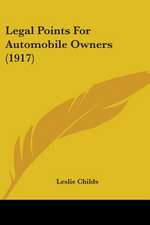The Treatment of Immigrants in the European Court of Human Rights: Moving Beyond Criminalisation
Autor Amanda Spaldingen Limba Engleză Paperback – 24 ian 2024
| Toate formatele și edițiile | Preț | Express |
|---|---|---|
| Paperback (1) | 269.94 lei 6-8 săpt. | |
| Bloomsbury Publishing – 24 ian 2024 | 269.94 lei 6-8 săpt. | |
| Hardback (1) | 510.34 lei 6-8 săpt. | +109.23 lei 10-14 zile |
| Bloomsbury Publishing – 13 iul 2022 | 510.34 lei 6-8 săpt. | +109.23 lei 10-14 zile |
Preț: 269.94 lei
Preț vechi: 347.76 lei
-22% Nou
Puncte Express: 405
Preț estimativ în valută:
51.66€ • 53.79$ • 43.66£
51.66€ • 53.79$ • 43.66£
Carte tipărită la comandă
Livrare economică 08-22 martie
Preluare comenzi: 021 569.72.76
Specificații
ISBN-13: 9781509947447
ISBN-10: 1509947442
Pagini: 228
Dimensiuni: 156 x 234 x 25 mm
Greutate: 0.33 kg
Editura: Bloomsbury Publishing
Colecția Hart Publishing
Locul publicării:London, United Kingdom
ISBN-10: 1509947442
Pagini: 228
Dimensiuni: 156 x 234 x 25 mm
Greutate: 0.33 kg
Editura: Bloomsbury Publishing
Colecția Hart Publishing
Locul publicării:London, United Kingdom
Caracteristici
Explores questions in the growing field of research of 'crimmigration'
Notă biografică
Amanda Spalding is Lecturer in Criminal Law at the University of Leeds, UK.
Cuprins
Introduction I. Immigrants are being Undercriminalised II. Book Structure 1. The Criminalisation of Immigration in Europe I. The Intertwining of Criminal Law and Immigration Law II. The Use of Criminal Justice Practices in Immigration Control III. The Media Discourse Surrounding Immigration IV. Moving Beyond Criminalisation V. Conclusion 2. The Right to Liberty I. The Use of Immigration Detention II. An Overview of the Right to Liberty III. The Test for Criminal Detention IV. The Test for Immigration Detention V. Any Real Protection against Arbitrariness? VI. Conclusion 3. The Right to Liberty: Criminal Limb I. The Use of Deportation and Administrative Removal II. An Overview of Article 6 III. The Applicability of Article 6 to Immigration Decisions IV. Are Immigration Measures (Sometimes) Criminal Penalties? V. Conclusion 4. The Civil Limb of the Right to a Fair Trial I. Criminalisation and Immigration Decision-Making Procedures II. An Overview of the Civil Limb of the Right to a Fair Trial: Civil Rights and Obligations III. The Applicability of the Civil Limb of Article 6 to Immigration Decisions IV. Inconsistencies and Interpretations V. Conclusion 5. The Prohibition on Torture, Inhuman and Degrading Treatment I. Criminalisation and the Return of Foreign Nationals II. An Overview of the Prohibition on Torture, Inhuman and Degrading Treatment III. Exceptions for Immigrants? IV. Conclusion 6. Moving Beyond Criminalisation: A Two-Tier System I. A Two-Tier System II. How Did the Two-Tier System Come into Being? III. Repercussions of the Two-Tier System: Discrimination IV. Repercussions of the Two-Tier System: The Erosion of Rights V. Conclusion ConclusionI. Moving Forward
Recenzii
The book provides an intelligent and thoughtful analysis of its topic . Both scholars and students would undoubtedly appreciate the clarity of Spalding's analysis and the cogency of her arguments, which constitute a precious addition to research at the intersection of human rights and criminal law, and not just in the immigration context.







